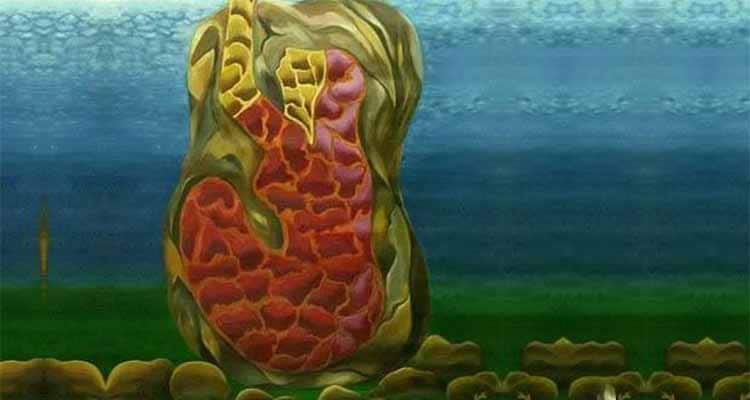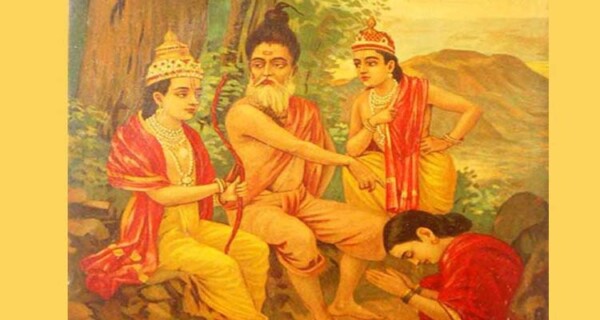The story of Ahalya and Indra is one of the most interesting stories of Indian mythology. Once when Rishi Gautam leaves for his morning ablutions, Indra comes in his guise and has sex with Ahalya. On his way out, he meets the sage who had sensed something was amiss and returned early. He curses Indra to have 1000 marks of what he covets the most on his body, and as the woman who couldn’t distinguish the touch of her husband was no better than a stone, curses Ahalya to turn into a stone herself. The Gods intervened and the 1000 marks are converted into eyes, sahasra-aksha, and Ahalya would be redeemed when Vishnu visited her as Lord Rama. Ahalya is never asked to give her side of the story, nor does she make any effort to explain. She maintains a stony silence.
Related Reading: Here’s The Story Of What Happened To Radha After Krishna Left
Real Story of Ahalya in Ramayana
Table of Contents
Ahalya is created by Lord Brahma out of the water as the most beautiful woman in order to break the pride of Urvashi, the foremost celestial nymph. What does the word Ahalya mean? In Sanskrit it means “one who has impeccable beauty”.
Then Brahma places her in the care of Rishi Gautam until she reaches puberty. When the sage returns Ahalya, Brahma, impressed by the sage’s sexual restraint and asceticism, bestows her upon the sage himself.
Why did Indra seduce Ahalya?
Lord Indra, believing that all beautiful things on earth are meant for him, resents Ahalya’s marriage to the forest-dwelling ascetic. Indra thinks of Ahalya as the most beautiful woman and feels unhappy about the fact that she is married to an old man. Indra desires her intensely and looks for ways and means to get close to her. He often visits Rishi Gautam’s Ashram without her knowledge and watches her closely. The more he sees her the more he desires her and finally hatches a plan.
Didn’t Ahalya understand this wasn’t her husband?
Where did Ahalya fit in? Didn’t the Supreme Creator find it necessary to ask her if she wanted a husband who had been a father figure? Scriptures say that man has duties and responsibilities at every stage of his life. Man has a responsibility towards his wife during the householder stage and it’s his duty to keep his wife and family happy. If that was so, was Ahalya happy? Could a man for whom the act of sex was nothing but a ritual, satisfy the cravings of a youthful maiden? At the prime of her youth, she had to live with an old man whose attention was elsewhere.
Some say Ahalya wasn’t to be blamed, as she didn’t know about Indra’s disguise. Did she really not know that the man in front of her wasn’t her husband? Or should the question be, was she guilty at all?
As Brahma’s daughter, it was highly improbable that she didn’t see through Indra’s deception. Ahalya knew her husband’s daily routine and for him to crave bodily pleasure at the brahma-muhurta when the union of a man and woman is forbidden was out of character, and a woman who had spent a lifetime with a person ought to have known that. Scriptures say that gods have no form but a heavenly aroma, which should have been the other indicator that this wasn’t her husband. But she doesn’t question and gives in. In the early cantos of the Ramayana, Valmiki says: Possessed by sensual passion Ahalya has surrendered herself to Indra consciously.
Related reading: Tara and Chandra: If a dissatisfied partner has an affair, who is to be blamed?
Why did Ahalya become a stone?
Did the Supreme Creator take pains in creating this beauty to let her wither in the dry desert of an ascetic’s ashram?
When the owner of the flower neglected its bloom, wasn’t it obvious that bees would swoon over this beautiful flower? And in such a state of momentary adulation, if the flower did allow the bee to have its nectar, was this unnatural?
Wasn’t the sage’s curse for Ahalya to become a stone ironic in itself?

She, who was known as Ahalya since birth, became unploughable only after the curse! She was cursed to be barren and lifeless like a stone only after she felt the most fertile in her life. She was made inert only after she felt like a woman for the first and probably the only time. How was the inertness different after the curse, since prior to that she was no different from a living stone?
How had her life changed, except that she didn’t have to breathe and due to the lack of feeling, she didn’t have to undergo the trauma of a neglectful husband who was confining her in the moral clutches of a lifeless matrimony? A pain that could only be felt by someone bearing the burden of divine beauty, who had the blood of youth running in her veins and who was aware that she deserved pleasures designed by the selfsame Creator.
Ahalya was punished by a man because she exercised her individuality. Her decision to yield to sexual curiosity was seen as an assertion of her femininity, a threat to the patriarchal double standards where the co-offender male gets away with a minor punishment and the woman is punished for eons. She has to suffer in the form of a stone.
My question to my readers: Was Ahalya’s act an act of transgression or was it a case of an individual transcendence?
NB: My book Shakuntala – The Woman Wronged has debated this topic from different angles.
Why newly wed couples in Bengal cannot spend the first night together
A royal princess, but Duryodhana’s daughter Lakshmana had a tragic life
Your contribution does not constitute a charitable donation. It will allow Bonobology to continue bringing you new and up-to-date information in our pursuit of helping anyone in the world to learn how to do anything.
























Featured
Karmic Relationship Vs Twin Flame: 13 Key Differences
17 Signs Your Twin Flame Is Thinking of You
Twin Flame Love: How To Recognize It
Twin Flame Relationship: Meaning, Signs, And How To Navigate
19 Spiritual Signs Someone Is Thinking About You Sexually
7 Signs Someone Is Constantly Thinking About You – It’s More Than Just Coincidence
Seeing 222 When Thinking Of Someone – Meanings And What To Do
Your Guide On Numerology Compatibility – What’s Your Life Path Number And Who Are You Most Compatible With?
Twin Flame Reunion – Clear Signs And Stages
Psychic Expert Shares 21 Spiritual Signs Your Ex Misses You And Wants You Back
What Is The Spiritual Meaning Of Being Pregnant In A Dream? 7 Possible Explanations
17 Powerful Signs From The Universe Your Ex Is Coming Back
What Is Agape Love And Its Role In Modern Relationships
Sexual Ties: Meaning, Signs, And Tips To Break Away
21 Miraculous Prayers For Marriage Restoration
Psychic Expert Shares 11 Spiritual Signs He Will Come Back
15 Angel Numbers For Love And Relationship
10 Signs You Are In A Spiritual Relationship With Someone
11 Beautiful Ways God Leads You To Your Spouse
What Does Yin And Yang Mean And How To Find The Balance